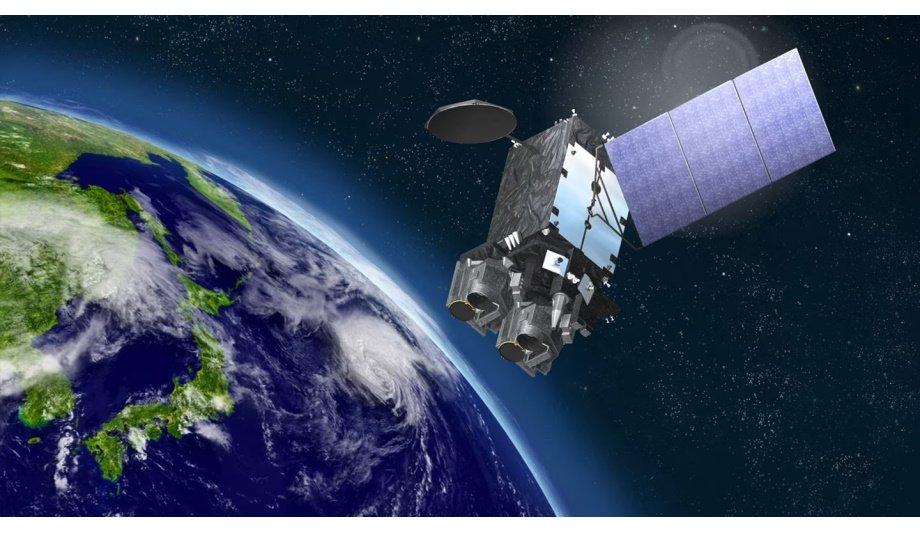Mitsubishi Electric Corporation (Mitsubishi Electric) has announced that it won the contract from the Japan Meteorological Agency (JMA) to build the nation's newest geostationary meteorological satellite, known as the Himawari-10, which will be the fourth straight such satellite to be built by Mitsubishi Electric, going back to the Himawari-7 satellite built nearly 20 years ago.
Himawari-10
The Himawari-10 is a successor to the Himawari-8 and Himawari-9 satellites
The Himawari-10 is a successor to the Himawari-8 and Himawari-9 satellites, which are currently operating in geostationary orbit. The Japan Meteorological Agency (JMA) called for proposals for the procurement of the spacecraft, based on Japan’s Space Policy, to satellite manufactures of both Japan and overseas.
Mitsubishi Electric was awarded the contract based on its extensive experience with satellites and the JMA’s high evaluation of the company’s proven DS2000 standard satellite platform and ground-data processing software.
Himawari-10 geostationary meteorological satellite features
1) Advanced equipment for expanded observation capabilities
- Himawari-10 will be equipped with a visible infrared imager and a hyper-spectral infrared sounder, both built by L3 Harris Technologies of the United States, and a space environment sensor from the National Institute of Information and Communications Technology of Japan (NICT).
- The imager that offers observation wavelength bands and resolutions superior to those of the Himawari8 and 9, will gather two-dimensional information about cloud and water-vapor distribution, and land, sea and cloud temperatures based on frequent measurement of visible to infrared rays emitted from the earth’s surface.
- Himawari-10 will be the first Japanese satellite to use a hyper-spectral infrared sounder to gather three-dimensional information about water vapor and atmospheric temperature by measuring infrared rays with high-spectral resolution for improved forecasting of heavy and torrential rain as well as typhoon paths.
- The space environmental sensor will measure the intensity of proton and electron beams in the space, which often are the cause of spacecraft malfunctions, to enhance forecasting reliability.
2) High-precision attitude stabilization system and ground-data processing software
- The DS2000 with a highly durable and precise attitude stabilization system and the ground-data processing software for calibrating imager and sounder data maximize sensor performance.
3) High reliability for practical systems
- High reliability will be achieved by leveraging the company's long experience with the Himawari series and its modern production facility, launched in 2020, which offers a highly advanced production management system for easy access to information for extra-efficient production.
Main Specifications:
- Satellite Bus: DS2000 standard satellite platform
- Mass: Approx. 2.4t dry (without fuel) and approx. 6.1t wet (at launch)
- Dimensions: Approx. 4m x 3m x 6m when solar array is stowed, Approx. 11m in width when solar array is deployed
- Orbit: Geostationary orbit
- Design life: More than 15 years
Mitsubishi Electric’s Space Business
Mitsubishi Electric has been the major manufacturer in Japan’s space business for decades
Mitsubishi Electric has been the major manufacturer in Japan’s space business for decades, including serving as the prime contractor of almost half of Japan’s national satellite programs led by the Japan Aerospace Exploration Agency (JAXA).
The company’s DS2000 standard satellite platform is utilized for both experimental satellites and those operating as essential infrastructure for communications, meteorology and other space-based observations in Japan and overseas.
Mitsubishi Electric develops weather-satellite ground facilities
In addition to delivering the Himawari-7, 8 and 9 models, Mitsubishi Electric developed and maintains weather-satellite ground facilities.
Going forward, Mitsubishi Electric is committed to further supporting the Japan Meteorological Agency with improved forecasting of typhoons and both heavy and torrential rains to strengthen disaster prevention in Japan.
